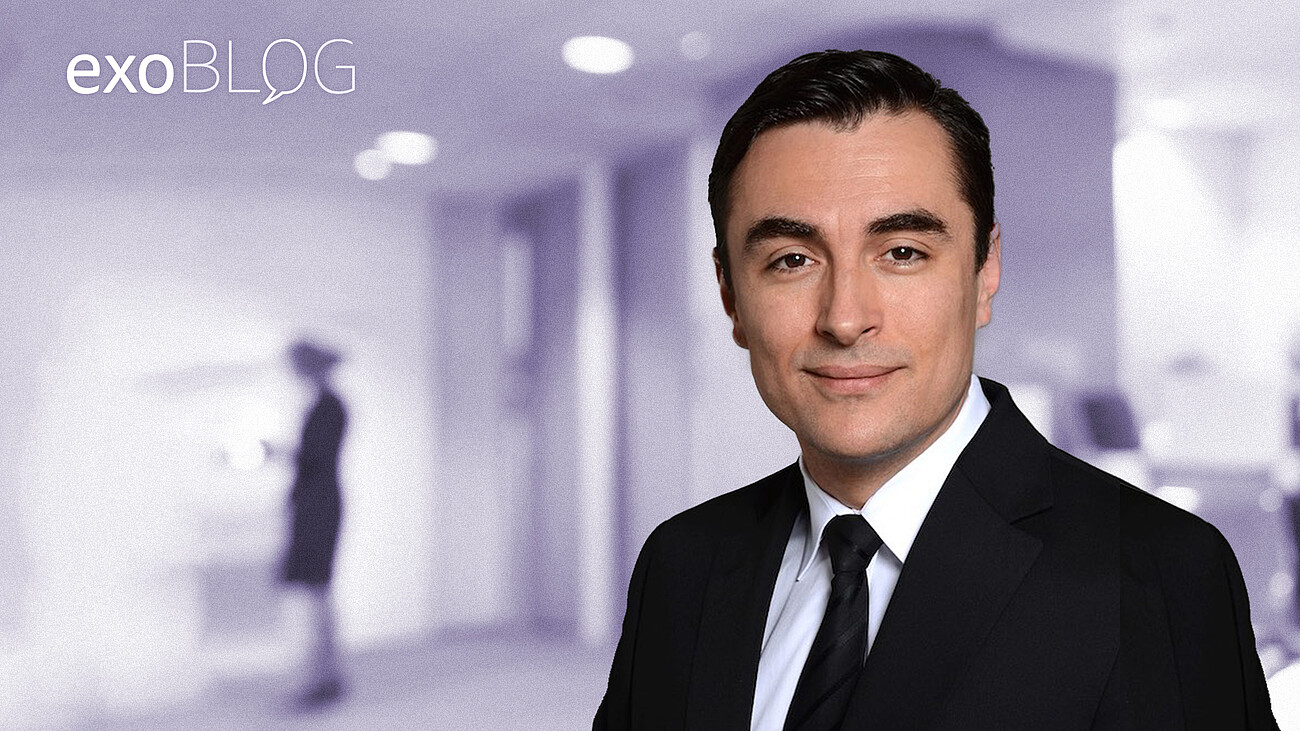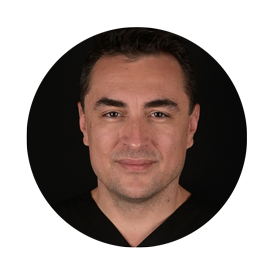Import designs, mix and match with exocad to sculpt and wow
Can dentistry be more creative? Dr. Paul Zhivago thinks so. Paul is the course director of digital dentistry for the Post Graduate Prosthodontic Department at New York University’s College of Dentistry. He’s a board-certified prosthodontist, an implant surgeon, a practice owner, and an artist. Paul explains how he uses exocad’s open architecture software to achieve beautiful restorations and please patients.
Q: Let’s start with the basics. Which exocad software do you use?
A: I use DentalCAD 3.1 Rijeka with all the modules for pretty much everything—mostly full-mouth restorations, adjustments of occlusions, and reestablishing occlusions. Also, esthetic smile design, temporaries, crowns, bridges, and immediate dentures. And we work with lab partners who use exocad so we can send cases back and forth.
Q: Why exocad?
A: I have to go a little bit back to answer that question. Back in the day, I liked art and drawing but perspective was not my strongest point. I started to work with 3D software that wasn’t dental and got used to an open architecture environment. At the beginning of digital dentistry, there were not many things out there that weren’t restrictive. exocad has always been completely open. That’s what I love about exocad—the freedom of it. When I design something on the exocad library, I can export and import my designs, mix and match all the time, and export and save.
“It's fun. You sit at the computer, think of your patient, design what you want, and bring it to life.”
Q: How do you talk to your patients about the digital tools you use?
A: We have a protocol in my office that the patient gets scanned and photographed prior to the consultation. Usually, I take the pictures first and the scan happens. While my staff is taking x-rays, CBCT, I start to work on the smile design. It's remarkable that I can now design something quickly in my office and then present it immediately to the patient. We have screens where we sit with patients and show them what we can do. Working with exocad software is fun. You sit at the computer, think of your patient, design what you want, and bring it to life.
Q: How has that changed the patient experience?
A: It's very powerful. If we were to work with patients in a traditional way, we would basically tell the patient what we can get done for them, but we don't have any proof of that. We would be selling them a product that has no clear picture for them. Now with imaging and 3D, we can show the patient what we can do, and we can also bring it into analog because 3D can be printed.
You empower the patient to a certain degree when they have input. Dentistry is a little bit scary, right? You go to the dentist. You don't know what's happening. If you have the opportunity to be part of the process and modify things together, you take some apprehension away. That helps a lot with treatment plan acceptance.
Q: As course director for the digital dentistry program at NYU, what’s your impression of students’ experience with the software? How challenging is the learning process?
A: I usually have about 30 residents in my program for a very intensive course in the summer. My colleagues and I teach them fixed implant and some removables, all in the digital-type of execution. It's very intuitive. My residents can pick up exocad really easily and can execute treatment plans.
Q: From your perspective, is the investment in exocad software worth it?
A: I think that the cost of exocad software is absolutely fair. You get what you pay for, you keep it and that’s it. There are no additional fees.
You know, it's not unusual that I have a patient coming in desperate for treatment. To be able to say to the patient that I can provide a completely new design of temporaries tomorrow is amazing. You know, we cannot do the finals overnight, but at least tomorrow the patient will be super happy with his or her smile. You can also converge really large cases. And that doesn't happen once, that happens all the time. Without exocad software, I just could not do it. So, yeah. it's definitely worth it.
Dr. Zhivago’s top five tips for digital newbies:
- Get some serious hardware. If you want to do 3d, don't buy a computer that's submarginal.
- Buy software from a distributor who can help you to walk through it.
- Watch a lot of YouTube videos. There's so much out there that explains everything step by step.
- Be patient. It’s just like when you start a new hobby. If you start to play tennis, you have to go and play and do it and repeat. Then you will see your progress.
- Make sure that your scanner, 3D printer, and software are open so you can change up things and move things around.
Q: Time for some “get to know you” questions. Best song to start your day?
A: I'm listening right now to a band called Big Thief. The song I like is “Simulation Swarm.”
Q: Favorite movie?
A: I grew up in the 1980s, so I love Star Wars.
Q: Do you have a mentor?
A: My father was a dentist in Germany. He started very early in 1990 or 1991 with the Cerec system. I was always hanging out in his office as a little kid, so I had a little bit of exposure. But then after that at NYU, I have people who supported me a lot like Dr. Leila Jahangiri at NYU, who’s the chair of prosthodontics, and Dr. Dennis Tarnow who taught me implant placement. A lot of fantastic people have influenced me.
Q: What's your passion?
A: Besides dentistry? I like race car driving. I follow motorsport a lot. I drive a little bit by myself on weekends. It's a great way to escape the daily stuff.
Q: Do you have a great tip to share?
A: Whatever idea you have, if you're really passionate about it, just do it. Don't worry about left and right. Just go forward.
Q: First word that comes to mind when I say exocad?
A: Freedom.
Dr. Paul Zhivago received his Doctor of Dental Surgery degree from New York University College of Dentistry where he also completed his education as a Prosthodontist. He then trained at Columbia University College of Dental Medicine as a surgical and an implant fellow. He is a specialist in Esthetic, Restorative, and Implant Dentistry and lectures nationally and internationally on the topic of Digital Dentistry. Currently, he is a Clinical Assistant Professor in the Department of Prosthodontics at NYU College of Dentistry and teaches the digital dentistry course for the Post Graduate Prosthodontic Department. He was nominated in 2017 for the Edison Award and also voted in 2017 as one of the 40 Best Dentists under 40 years in the United States for his innovations in the field of digital dentistry and open workflows in CAD/CAM. As a prosthodontics resident he was awarded with the Panadent Teaching Award and won the Resident Award at the Annual World Series Conference based on his presentation regarding digital dentistry. He developed unique workflows in restorative and implant dentistry to deliver a customized result for his patients with the help of digital dentistry. He is a member of American Dental Association and the American College of Prosthodontics. Follow Paul’s work on Facebook, Instagram and LinkedIn.

by Caitlan Reeg
Writer at exocad
Caitlan Reeg spends her days telling the world about the innovations her colleagues create. She’s passionate about healthcare, technology, and the ways the two interact to improve our lives. A former journalist, Caitlan has worked on staff at Dow Jones Newswires in Frankfurt and at the national public radio program Marketplace in Los Angeles.




